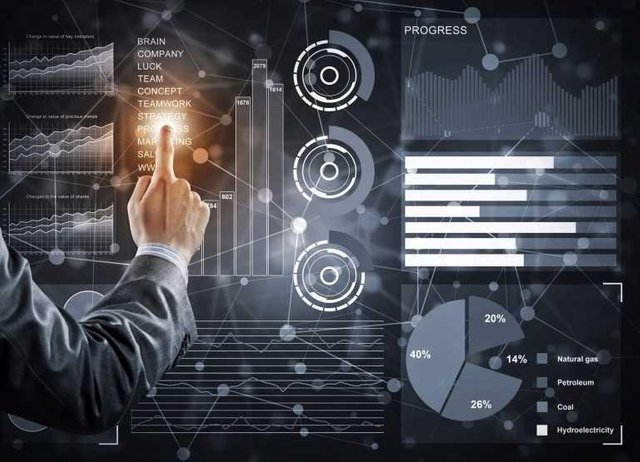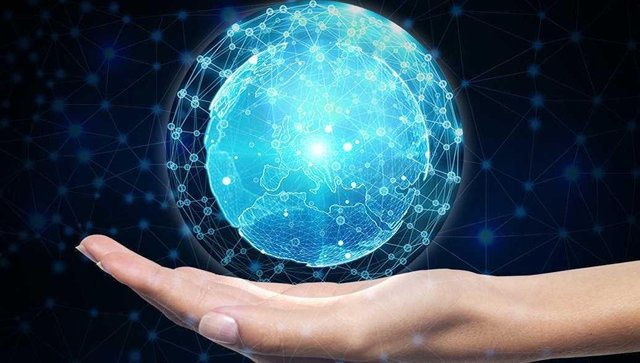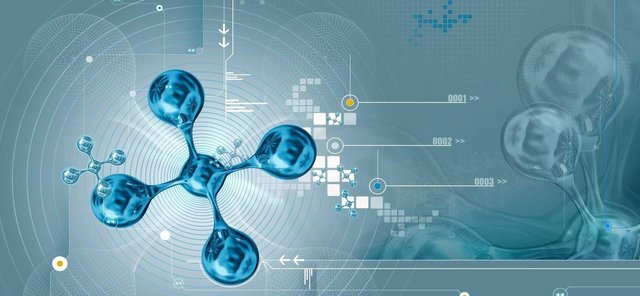How technology "jumps" changes the lives of millions of people
** Here I am based on my own knowledge with my book media **

Hello Walking in any city, we can not fail to see evidence of secular technological progress around us. From the power grid, people looking at their smartphones, to water passing through underground pipes, are all just a part of everyday life.
It takes decades of innovation, iteration, trial and error. But in developing countries, especially in African countries, millions of people are losing technological evolutionary processes, leapfrogging outdated technology and turning to modern solutions. As a bonus, they are often green, stable and relatively inexpensive.
Here are some industries where leap technology has the greatest impact on people's lives.
Energy
** Energy ** is the most fundamental and most important resource for development; without it we do not have many opportunities, with the help of people start to develop other technologies, such as cell phones. In the State Electricity Consumption Report in 2017, the World Bank stressed that UN sustainable development objectives, such as health, education, food security and employment, rely heavily on consistent and reliable energy access.
For rural communities in Africa that do not have electricity, it is expected that American-type networks will eventually be built. ** But thanks to the growth of renewable energy, the network may not be necessary. Startups, such as Off Grid Electric and Black Star Energy, have done business from installing solar panels in private homes ** . Customers make a down payment, followed by monthly installments, until they receive their home solar equipment, including panels, batteries, phone chargers, radios and LED lights.
Payments can be made by buying a scratch card at a kiosk or using a cell phone.
The energy supply that continues to grow in the continent is not limited to solar energy alone. Ethiopia is building the Great Renaissance dam on the Blue Nile - once completed, the country will be able to generate 6,000 megawatts of electricity, which is four times the current total capacity. Although hydropower is not a new technology and requires network infrastructure, it will help Ethiopia jump over coal as a major energy source.
** Mini-grids, defined as less than 10 megawatt generating systems that serve customers through local distribution networks, also occur in rural areas, and they often look for renewable sources. The International Energy Agency estimates that by 2015, 140 million people will connect to mini networks in rural areas by 2015. **

Connectivity
** If energy ** is the first step on the development ladder, communication does not lag far behind it. In addition to the fact that the interconnection itself is important, connectivity provides many additional opportunities - the progress in each of the industries mentioned here directly depends on the large number of mobile phones. Forget about the land line; millions of Africans, who have never had a home phone, immediately went straight to the use of cell phones.
According to ** The Economist ** , a 10 percent increase in mobile phone share amongst developing citizens increases per capita GDP growth by about 1 percent per year. The biggest driver of this growth is cellular money; people who have never had a bank account or a safe way to store, transfer, and invest money, now have it in their hands. A study conducted by economists at the Massachusetts Institute of Technology in 2016 showed that the use of electronic money helped 194,000 Kenyans to avoid extreme poverty for 8 years.
The largest cash service on the continent is M-Pesa, which in 2017 in 10 different countries has more than 30 million users. Users can send text payments to each other, as well as access to loans, international money transfers and small business services.
Education
** Electronic money ** , smartphones and the internet would not be much in demand without basic reading, writing and math skills, not to mention critical thinking and solving fundamental problems for innovation. In addition to these foundations, to sustain its economy, African countries should prepare students for a career beyond the agrarian and manufacturing sectors.
The lack of qualified teachers in many African countries - coupled with the fact that these countries have the world's fastest growing school-age population, making provision of high quality education a fundamental task.
** Technology has ** not solved this problem, but it has serious impact on the solution. Bridge International Academies , a network of private schools that began working in Kenya, provides teachers with script lessons read on tablets. The company's mission is to train 10 million children in developing countries, and although their methods have caused controversy, students consistently pass national exams with above-average results.
** Ed ** tech is based on a private school on the continent, funded from Silicon Valley. Eneza Education, a virtual mentor with over four million registered users, gives students digital access to quizzes and educational tools, tracking their progress in learning. The data collected were analyzed and used to adjust the program and further facilitated the learning process. Startups, such as Mwabu and Xander, offer a customized curriculum and teaching tool for teachers and students.

Agriculture
** According to the Brookings Institution ** , up to 60 per cent of jobs on the African continent are on agriculture, and food production in sub-Saharan Africa will increase by 60 per cent over the next 15 years to feed populations in the region.Some of the biggest problems facing farmers are solved using surprising simple technology. 2kuze, funded by the Gates Foundation and created by MasterCard, is a mobile platform that connects small farmers with buyers and banks.
In addition to facilitating payments in a simple and safe manner, the Platform helps farmers align their supply with market demand, bringing multiple benefits from increased farmer incomes while reducing prices-all consumers via text messaging.
Similarly, Wefarm is a digital network that allows farmers to question each other and access information received from the crowd via text messages. More than 735,000 farmers are registered for this service, and they can be used for free.
Health care
** From unmanned aerial vehicles to blood delivery to pharmaceutical robots, technology provides a health boost in the areas where it is most needed. **
At Helen Joseph Hospital in Johannesburg is South Africa's heaviest HIV clinic. Far beyond his abilities, hospitals began using robotic pharmaceutical systems that reduced errors in prescribing and reduced patient waiting time from more than 4 hours to less than 20 minutes.
Health care in the Western world is still very reactive, not proactive; we wait until somebody is sick to heal him, and instead of personalized data-based help, we apply a unified approach.
** African societies ** that do not have established health systems have their own set of problems - far more complex than we face - but they also have the opportunity to build health systems more efficiently and fairly from the start. Rwanda is a prime example, which boasts some of the most impressive statistics on health on the continent: 90 percent of the population has health insurance, more than 90 percent of HIV patients receive drugs.
As in virtually every other industry mentioned, Africa's supercar progress in healthcare is nothing more than a mobile phone. Across the continent, mobile phone services, such as ** SMS for Life ** , have changed the supply chain of drugs from malaria and other drugs.
Government programs in South Africa MomConnect and NurseConnect provide digital platforms for pregnant women, mothers and carers for advice and information on health issues, and to register pregnancies in the country's public health system.
** The Novartis Foundation in Ghana and the Babyl Health organization in Rwanda connect patients or general practitioners directly with narrow specialists by telephone. Government health workers in Uganda use a mobile health care system called mTRAC to track national drug stocks. **
Technology helps bring information and services to Africa faster than previously thought. But, as the continent population continues to grow, and with it the need for resources and services, can the leap model be measurable? More importantly, what about the more basic issues, solutions that remain beyond the reach of technology?
Access to water, sanitation and food, infrastructure, such as roads and bridges, and freedom from violent conflict, must be realized before progress can be initiated in the industry previously mentioned.
** Even when countries solve this problem, population growth may be the biggest problem on this path. Although poverty in sub-Saharan Africa declined 13 percent between 1990 and 2013, the absolute number of people living in poverty actually increased by 113 million. **
welcome friends in the ##destaSteem
Oow , welcome friends
Thanks
welcome friends...
Thanks...
Yes ,,, welcome friends ?
Thanks.
welcome friends,,,, ??
welcome friends ,?!
welcome friends,, good you post 1
welcome my friends ,,,,
Thanks
welcome friends the destaSteem ,,,
welcome friends....!!!💕